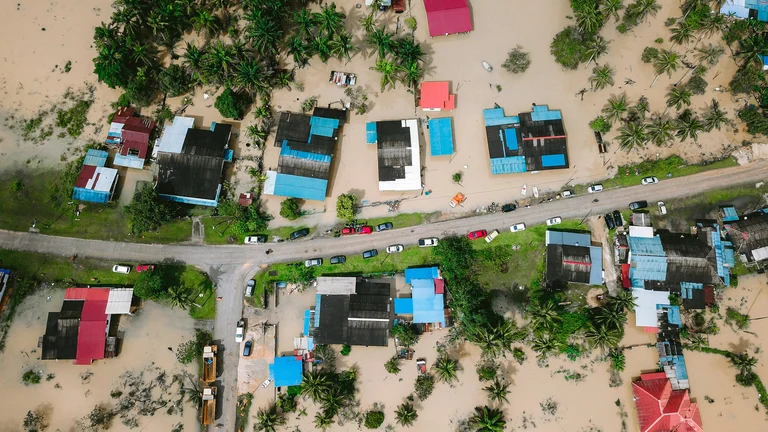What is Flood Insurance?

Flood insurance is a type of property insurance that covers losses and damages caused by flood-related incidents. Unlike standard homeowners insurance, flood insurance focuses solely on damages resulting from water overflow, typically from rivers, lakes, or other bodies of water. This insurance is crucial for homeowners in flood-prone areas as it helps provide financial protection against substantial property damage.
Why Is Flood Insurance Important?
The significance of flood insurance cannot be understated. Many homes are vulnerable to flooding, and without adequate coverage, homeowners can face severe financial difficulties. Floods can occur with little warning. In fact, many areas consider flood-related incidents a predictable risk. Thus, flood insurance becomes essential for homeowners seeking to safeguard their property investments.
Moreover, mortgage lenders often require homes located in flood zones to have flood insurance. Without it, owners may not qualify for financial assistance or loans, complicating property purchases and sales.
Types of Flood Insurance Policies
Flood insurance typically falls into two main categories: the Residential policy and the Commercial policy. Each serves different needs based on property usage.
The Residential policy offers coverage for personal homes. This policy provides assistance for rebuilding or repairing homes and replacing damaged belongings. Policies can also cater to renters, safeguarding valuable personal property against flood losses.
On the commercial side, the Commercial policy supports businesses in flood-affected areas. This helps protect buildings, inventory, and equipment. It can be essential for businesses that rely on physical assets to operate.
In addition to these categories, within residential policies, there are also two types of coverage: Building Property Coverage and Personal Property Coverage. Building Property Coverage addresses the structure itself, while Personal Property Coverage protects personal belongings within the home.
How to Get Flood Insurance?
Securing flood insurance is a straightforward process, though it can vary based on local regulations and the insurance provider. First, assessing your property’s risk level is crucial. Homeowners can consult local floodplain maps to ascertain their property's flood zone. These maps indicate the degree of flood risk, guiding insurance choices.
Once you understand your flood risk, reach out to insurance companies to explore coverage options. Many private insurance companies offer flood insurance, and the National Flood Insurance Program (NFIP) also provides policies through various insurers. Homeowners should compare different plans based on coverage amounts, premium costs, and deductibles.
When applying, be prepared to provide details about the property, including its age, location, and construction materials. Insurers may require photographs or reports about the property to assess risks accurately.
Common Misconceptions About Flood Insurance
Several misconceptions surround flood insurance. A common belief is that standard homeowners insurance policies cover flood damages. However, this is not typically the case. Homeowners need separate flood coverage to protect against water damage due to flooding.
Another frequent misunderstanding is that flood insurance is only necessary in high-risk areas. While high-risk locations are more likely to experience flooding, floods can affect any area, making insurance valuable for all homeowners. Additionally, many believe that flood insurance covers everything, but certain exclusions, such as loss of cash or expensive collectibles, apply.
Lastly, many homeowners think they can purchase flood insurance during a flood event. Unfortunately, most policies have a waiting period, typically 30 days, before coverage goes into effect. Hence, it’s wise to secure insurance well in advance of potential flooding.
| Aspect | Description |
|---|---|
| Types of Coverage | Residential and Commercial insurance options tailored for home and business needs. |
| Cost Factors | Premiums influenced by location, flood risk, and property details. |
| Mandatory Insurance | Required for properties in high-risk flood zones when using federally regulated financing. |
| Exclusions | Not all property types are covered; specific items may be excluded from coverage. |
| Waiting Period | Typically, there is a 30-day waiting period before policy coverage becomes active. |
FAQ - Flood Insurance Basics
What does flood insurance cover?
Flood insurance typically covers damages to buildings and personal property caused by floodwaters. It can assist in repairing or replacing damaged structures and personal belongings affected by flooding.
How can I find out if I need flood insurance?
Homeowners can determine their need for flood insurance by checking local flood zone maps, which display areas at risk for flooding. Consulting with an insurance agent can also provide personalized advice.
Is flood insurance mandatory?
While flood insurance is not mandatory for all homeowners, it is required for properties located in high-risk flood zones, particularly if they have mortgages from federally regulated lenders.
How much does flood insurance cost?
The cost of flood insurance varies depending on multiple factors, including the property's flood zone, elevation, and the amount of coverage selected. Typical premiums range from hundreds to thousands of dollars annually.
When can I buy flood insurance?
You can purchase flood insurance any time, but keep in mind there is often a waiting period of 30 days before coverage begins. It’s advisable to secure insurance before flood season begins.
Flood insurance protects homes and properties from damages caused by flooding, covering both structural and personal property losses. It is crucial for those in flood-prone areas and is available through private insurance companies as well as the National Flood Insurance Program (NFIP). Understanding risk levels, coverage options, and purchasing processes is essential for effective flood protection.
Conclusão sobre Flood Insurance Basics.